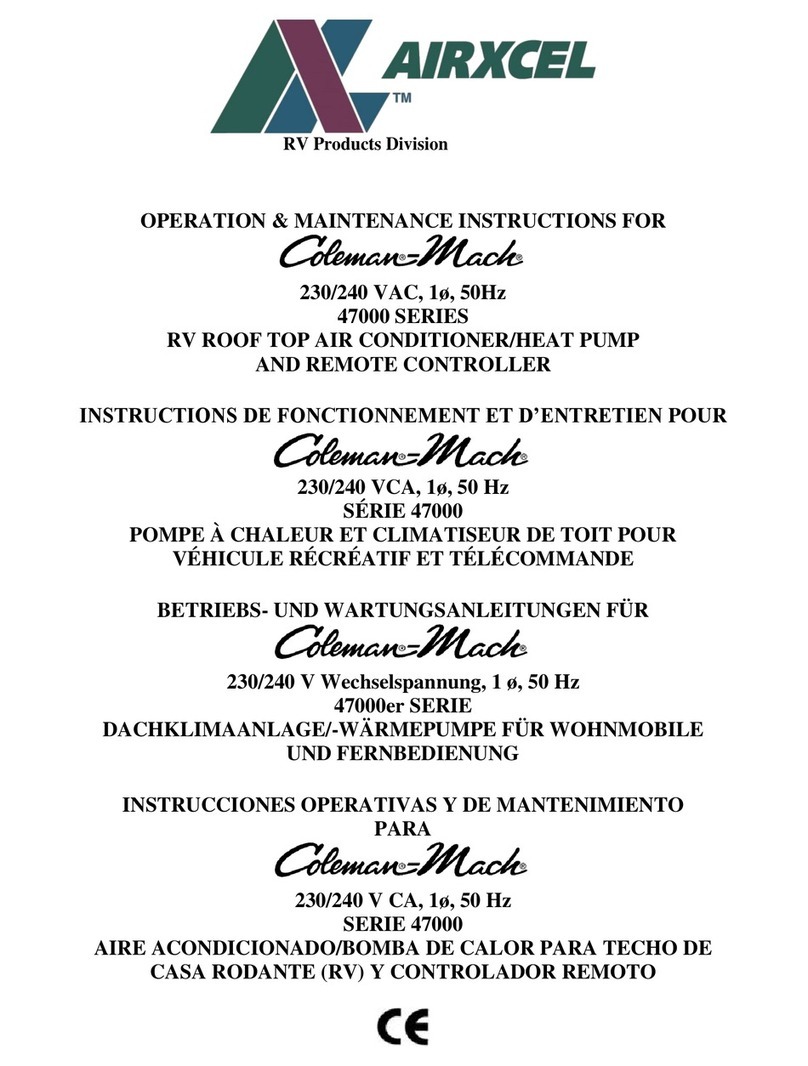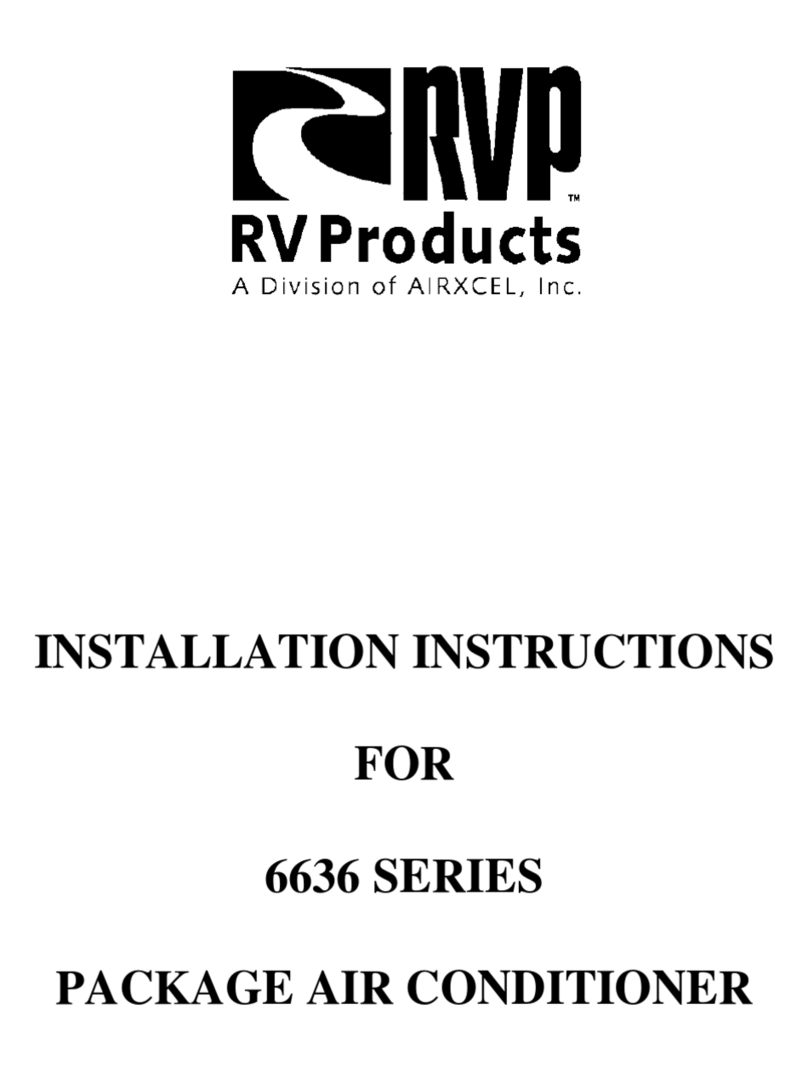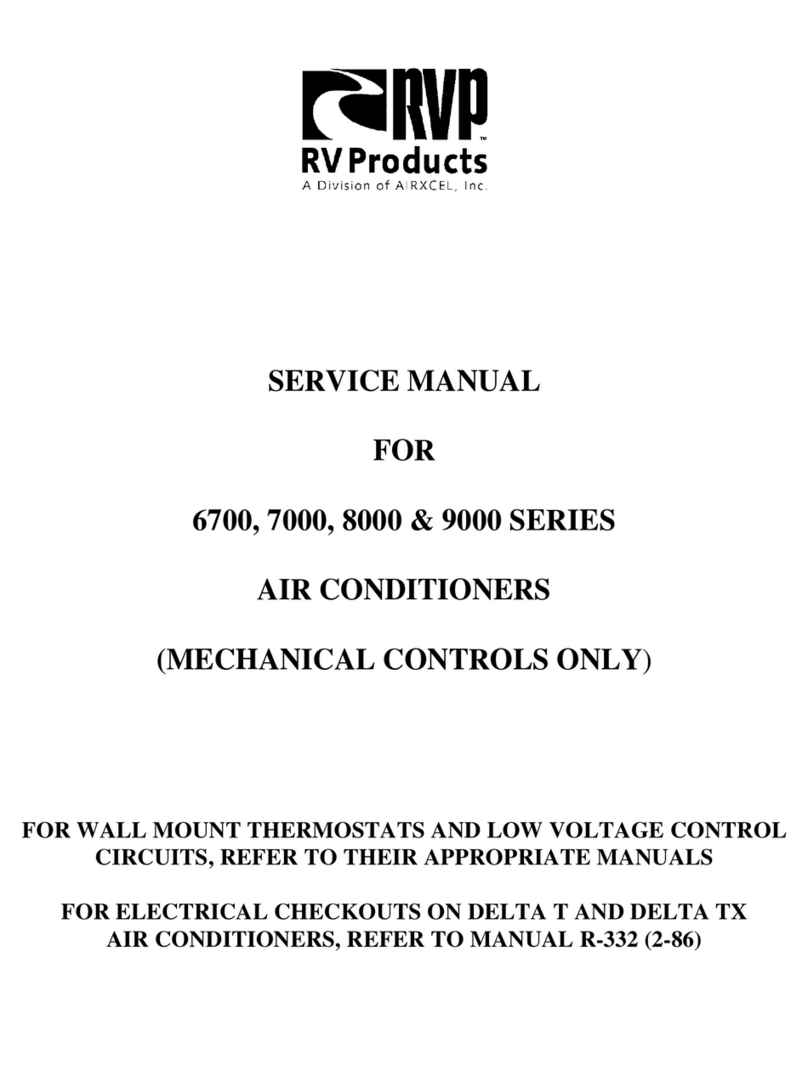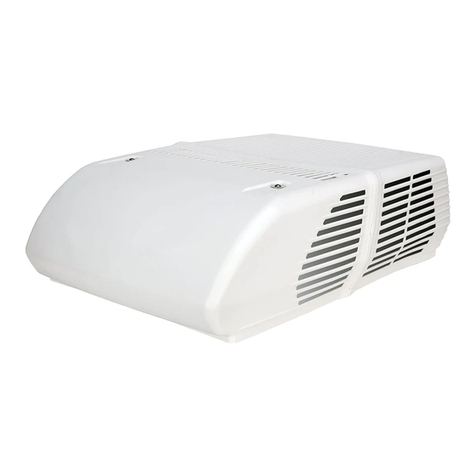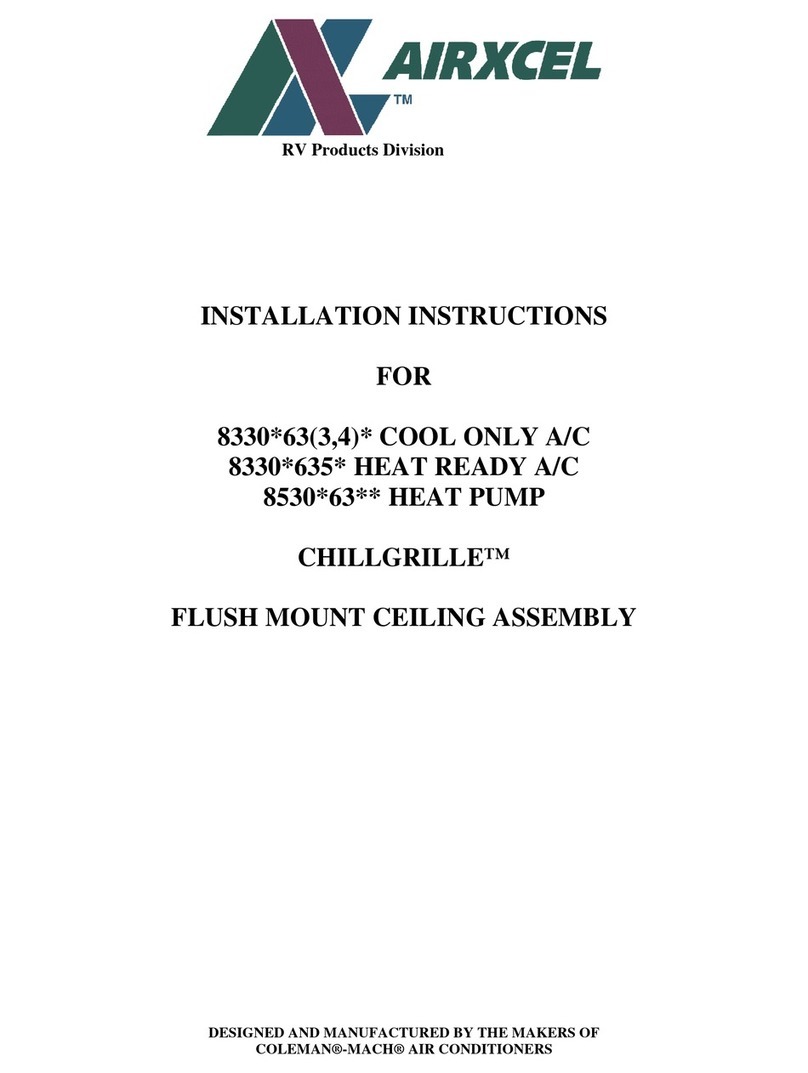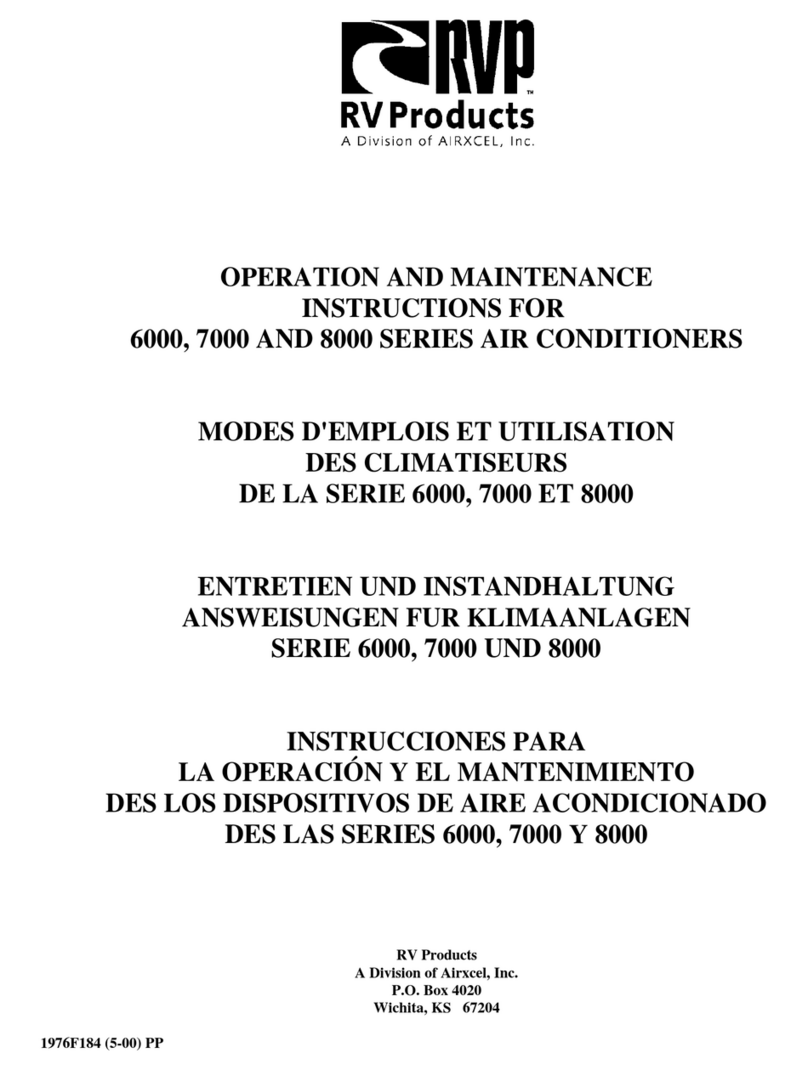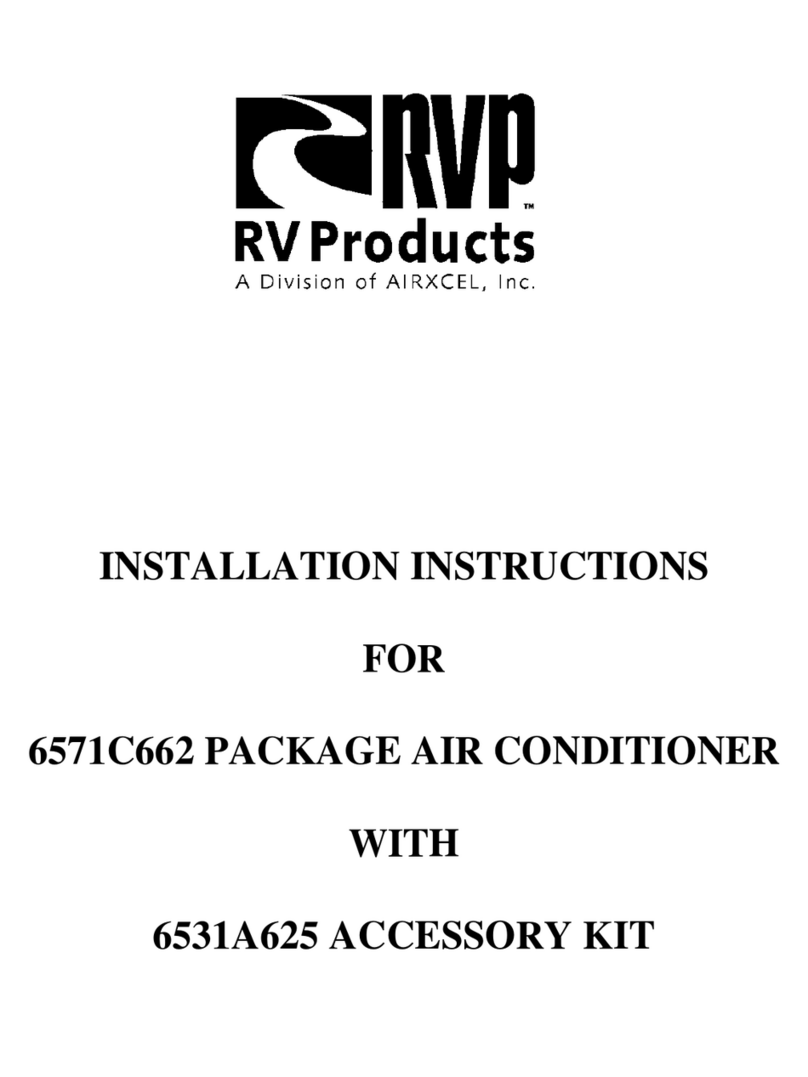
4
increased or full air flow is observed, the cooling coil should
be clear of ice.
III. Short Cycling
When an air conditioner is in operation, its compressor
circulates refrigerant under high pressure. Once off, it will take
two to three minutes for this high pressure to equalize.
The air conditioning compressor is unable to start against high
pressure. Therefore, once the air conditioner is turned off, it is
important to leave it off for two to three minutes before
restarting.
Short cycling the compressor (or starting it before pressures
have equalized), will in some instances, kick the circuit breaker
or overload.
IV. For Heating (“Elect-A-Heat” Ceiling Assembly
Model Only) Refer To Figure 1, page 3).
The optional Elect-A-Heat heating assembly is intended to
take the chill out of the indoor air when the air is a few degrees
too cool for comfort. The heating assembly is an effective
“chill chaser”. It is not a substitute for a furnace.
Do not expect the heating coil on your heater to glow.
Because the fan draws in cold air and forces it over the coil,
the coil will not turn red. A hint of red may occur where the
moving air does not directly touch the coil.
A. Turn the selector switch to the “LOW HEAT”
position. At “LOW HEAT”, the fan operates on
low speed with heat output at maximum.
B. Rotate the thermostat (temperature control) switch
to the position that is the most comfortable to you.
The thermostat will turn the heater on when the
temperature of the air entering the air conditioning
unit drops below this setting a few degrees and
automatically turns off when the temperature of the
air entering the air conditioner rises a few degrees
above this setting. The heater will continue to cycle
on and off in this fashion until the selector switch
is turned to another mode of operation.
C. Position the louvers to the desired direction the
discharge air is to flow.
Discharge air temperature can be controlled to some
extent by opening or closing the louvers.
When the louvers are closed, the warmest localized
discharge air is achieved. Fully opened louvers
will throw the warm discharge air to the back and
front of the vehicle for more efficient circulation and
faster warm-up. Although the air temperature is
lower with the louvers fully opened, the heating
capacity is still the same.
V. For Air Circulation Only (Refer To Figure 1, page
3).
A. Turn the selector switch for “LOW FAN” or for
maximum air flow, to “HIGH FAN”.
B. Position the louvers to the desired direction the
discharge air is to flow.
NOTE
When the selector switch is in the “LOW FAN” or “HIGH
FAN” position, the blower motor will operate continuously.
SECTION IV - MAINTENANCE
1. Owner
One of the biggest advantages to your new RV Products air
conditioner is that the maintenance needed to keep the unit in
good care is minimal. In fact about the only thing you, the
owner, must take care of is the cleaning and replacement of the
filters.
Filters are made from long life non-allergenic natural fibers
which can be cleaned and reused, and which completely filter
the circulated air when the air conditioner is in operation. If
the filters are not cleaned at regular intervals, they may
become partially clogged with lint, dirt, grease, etc. A clogged
filter will produce a loss of air volume and may eventually
cause an icing-up of the cooling (evaporator) coil.
IMPORTANT
Do not operate your air conditioner for extended periods of
time without the filter installed.
An even more serious condition occurs when the air
conditioner is operated without a filter. When this happens the
lint, dirt, grease, etc. that are normally stopped by the filter are
now accumulating in the cooling coil. This not only leads to a
loss of air volume and a possible icing-up of the cooling coil,
but could also result in serious damage to the operating
components of the air conditioner.
We recommend that the filters be cleaned and changed at least
every two weeks when the air conditioner is in operation.
